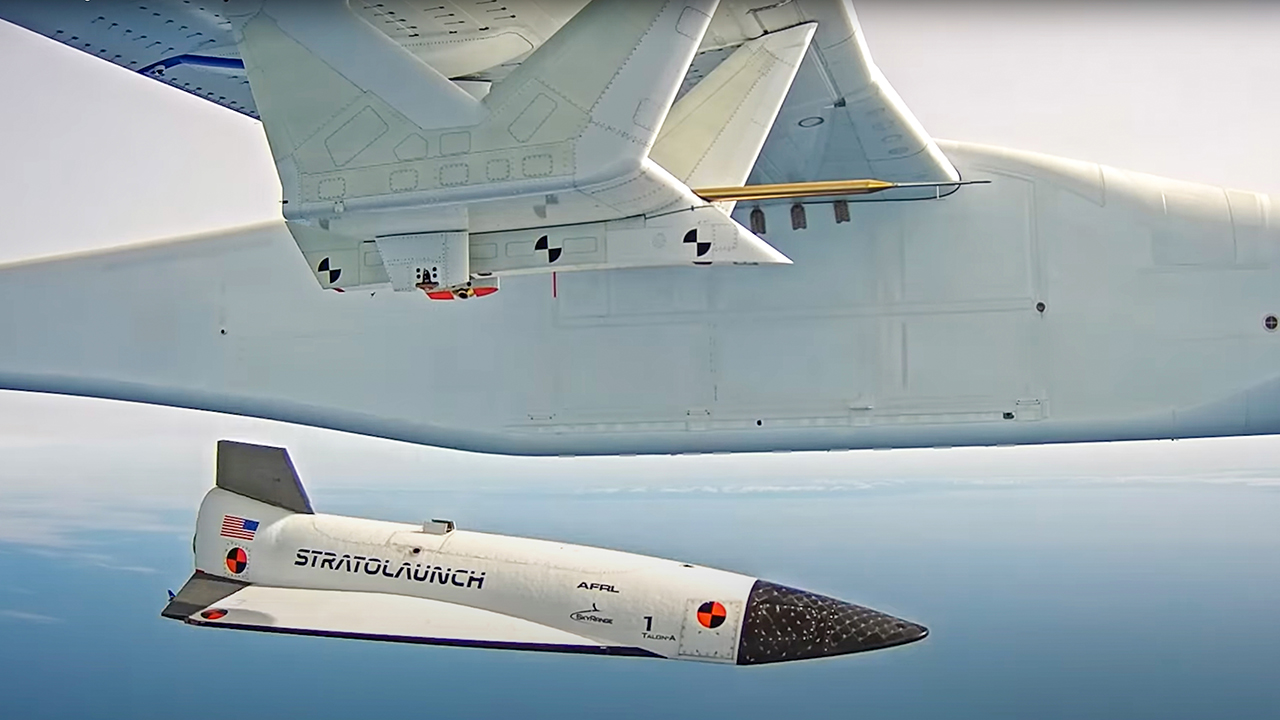Amazing Scenes of Gigantic Stratolaunch Dropping Talon-A TA-1 Remind of X-15 History
In a stunning demonstration of private industry aerospace accomplishment, Stratolaunch, LLC completed the first successful test launch of the hypersonic TA-1 Talon-A test vehicle.
The company released an exciting highlight video on March 26, 2024, from the successful flight test on March 9. The Stratolaunch/Talon-A test flight took place within days of another significant experimental commercial aviation milestone, when the Boom XB-1 supersonic testbed aircraft made its first flight from the Mojave Air & Space Port in California. The two significant test flights harken back to the days of military experimental flight testing at nearby Edwards AFB, where programs like the X-15 and XB-70 Valkyrie redefined the limits aviation.
The massive, six-engine Roc jet launch aircraft took off from the remote airport in the desert town of Mojave, California at 10:17 am on Saturday, March 9, 2024. The launch aircraft was carrying the TA-1 Talon unmanned hypersonic test aircraft on its specially built centerline payload station. At an undisclosed position over the Pacific, the TA-1 was launched.
The video shows the hypersonic test vehicle arcing away from the Roc launch aircraft and climbing in a flight profile reminiscent of the X-15 test program in the 1960s.
Senior vice president of engineering and operations for Stratolaunch, Aaron Cassebeer, said after the flight test, “Overall, we are incredibly pleased with how the TA-1 performed today. As it stands right now, we are well positioned to continue our planned test series.”
While Cassebeer’s remarks and the video confirm a successful test, little about the specifics of the first test flight were revealed.
The TA-1 achieved what was described as, “high supersonic” velocity during the flight. This may suggest the test aircraft did not accelerate into the Mach 5+ regime considered to be the definition of hypersonic speed. No specific information about test parameters was released and, in the video, instrumentation in the mission control room and in the Roc launch aircraft are obscured as a security protocol.
The TA-1 Talon-A hypersonic launch aircraft was powered by a binary-fuel engine called the Ursa Hadley built by Ursa Major Technologies. The 5,000-pound plus thrust powerplant burns a mixture of liquid oxygen and kerosene that, when catalyzed in flight during mixture, ignites in staged combustion to drive the aircraft potentially beyond the hypersonic speed regime. The Hadley is already an established powerplant that is produced using advanced 3D printing manufacturing techniques, lowering production costs and resulting in unprecedented efficiency for the hypersonic test regime.
Aaron Cassebeer said after the test flight that, “The Hadley engine performed very well today. It met all of our expectations.” The total time for the engine burn was approximately 200 seconds.
In an interesting footnote to the successful flight test, there was an attempt to recover all or some portion of the expendable TA-1 launch vehicle after its flight test, but the aircraft in its current version is designed to be expendable. A newer version of the test vehicle, the TA-2, is designed to have the capability to be recovered and potentially even reused.













